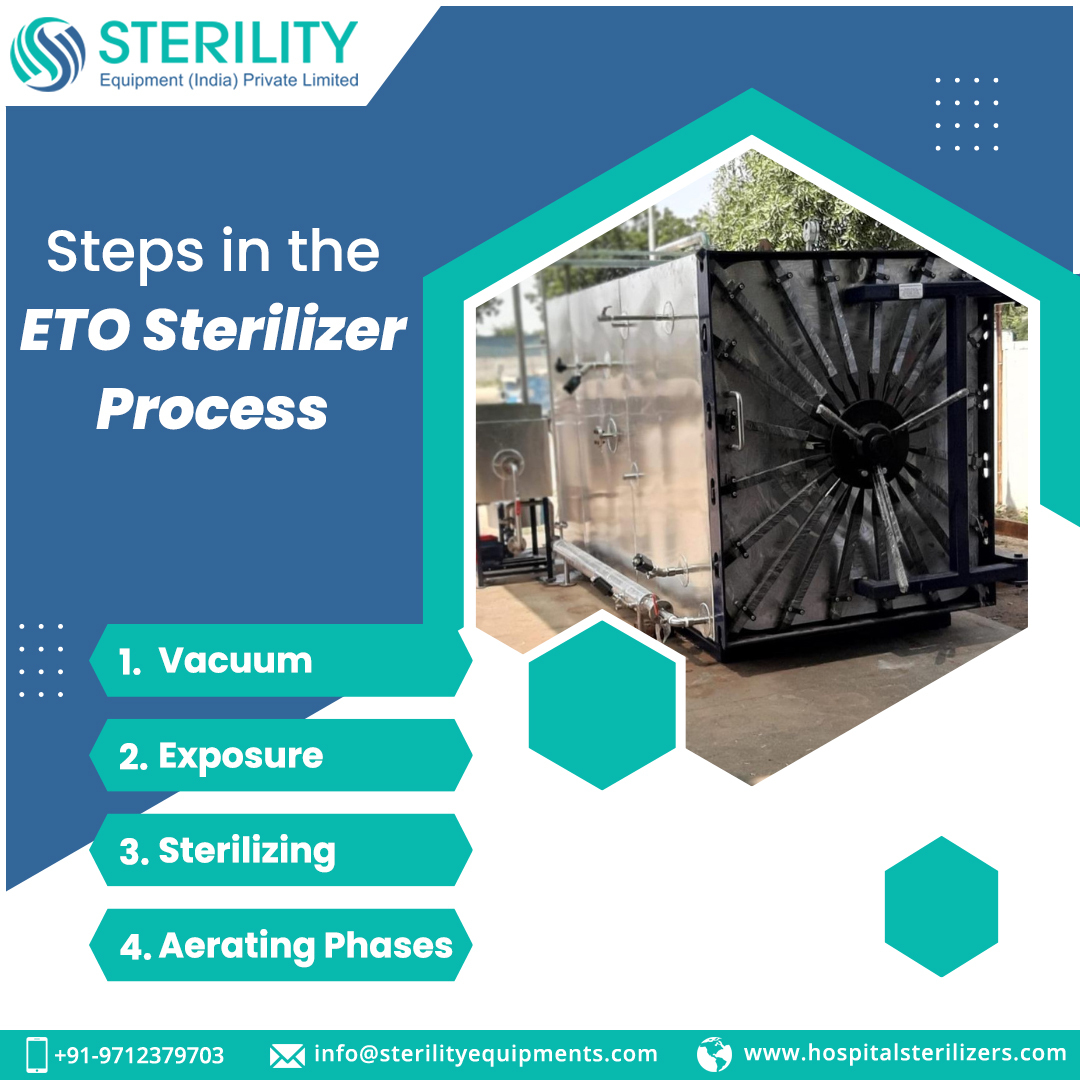Ethylene Oxide (ETO) sterilization is a critical process in industries like healthcare, pharmaceuticals, and medical device manufacturing. It ensures sterility while preserving the integrity of delicate, heat-sensitive products. Recent advancements in automation and control systems have revolutionized ETO sterilization, enhancing precision, safety, and efficiency. This article explores the role of automation in ETO sterilization processes and highlights the benefits of integrating advanced controls.
Understanding ETO Sterilization Process
ETO sterilization involves the use of ethylene oxide gas to eliminate harmful microorganisms. It is particularly suited for sterilizing complex instruments and materials that cannot withstand high temperatures or moisture. The process typically includes pre-conditioning, gas exposure, and aeration to ensure both efficacy and safety.
Importance of Automation in ETO Sterilization
Automation has become an indispensable aspect of modern ETO sterilization. By replacing manual interventions, automated systems:
- Minimize human error
- Ensure consistent results
- Enhance process safety
- Reduce labor costs
Key Features of Automated ETO Sterilization Machines
ETO Sterilization supports Advanced Control Systems
Automated ETO sterilization machines are equipped with programmable control systems that manage every stage of the sterilization process. These systems:
- Monitor parameters like temperature, pressure, and humidity
- Adjust gas concentration dynamically for optimal sterilization
- Log data in real-time for traceability and compliance
Pre-Programmed Cycles in ETO Sterilization Machines
Automated systems allow users to select from pre-programmed sterilization cycles tailored to specific materials or instruments. These cycles optimize time and resource usage, reducing downtime and enhancing productivity.

Advantages of Automation in ETO Sterilization Process:
- Enhanced Precision
Automation eliminates variability, ensuring uniform sterilization across all instruments and materials in a batch. This is particularly important for complex or delicate items. - Improved Safety
Handling ethylene oxide gas requires stringent safety measures. Automated systems reduce direct human interaction with the gas, minimizing exposure risks. - Operational Efficiency
Automated machines streamline processes, reducing turnaround times and increasing throughput. They are ideal for high-demand environments such as hospitals and industrial facilities. - Data Logging and Compliance
Modern systems log detailed process data, aiding in regulatory compliance and quality assurance. This data can be reviewed for process validation and troubleshooting.
Advanced ETO Sterilization Equipment
ETO Sterilization Machinery
These machines integrate automation to deliver precise, efficient, and safe sterilization. They include:
- Fully programmable controls
- High-capacity chambers
- Robust safety mechanisms
ETO Sterilization Chambers
Manufacturers of ETO sterilization chambers focus on durability, uniform gas distribution, and compatibility with automation systems. Stainless steel chambers are common due to their resistance to corrosion and ability to maintain stable environmental conditions.
Specialized Equipment for ETO Sterilization
Other essential equipment includes gas injection systems, vacuum pumps, and aeration units, all of which work seamlessly with automated controls.
Steps in the Automated ETO Sterilization Process
- Pre-conditioning
Items are loaded into the chamber, and conditions such as humidity and temperature are stabilized. Automation ensures consistency in pre-conditioning parameters. - Gas Injection
Ethylene oxide gas is introduced into the chamber. Automated systems regulate the gas concentration and exposure time to achieve thorough sterilization. - Sterilization Phase
The system maintains optimal conditions for the specified duration to eliminate microorganisms effectively. - Aeration
After sterilization, the chamber undergoes aeration to remove residual gas. Automated aeration ensures safety and compliance with regulatory limits for residual ethylene oxide.
Applications of ETO Sterilization
Automated ETO sterilization machines are widely used in:
- Hospitals: Sterilizing surgical instruments and delicate tools.
- Pharmaceuticals: Ensuring the sterility of packaging and drug manufacturing equipment.
- Medical Device Manufacturing: Sterilizing complex and sensitive devices like catheters and implants.
Choosing the Right Automated ETO Sterilization System
When selecting an automated ETO sterilization machine, consider:
- Capacity and Chamber Size: Choose a machine that matches your facility’s throughput requirements.
- Control Features: Look for systems with user-friendly interfaces, pre-programmed cycles, and data logging capabilities.
- Safety Features: Ensure the machine has robust leak detection, emergency shutoff mechanisms, and proper aeration systems.
- Compliance: Verify that the equipment meets international sterilization standards.
The Future of Automation in ETO Sterilization
Emerging trends in automation include:
- AI Integration: Predictive analytics and self-adjusting cycles for enhanced efficiency.
- IoT Connectivity: Remote monitoring and diagnostics to improve operational control.
- Sustainability Features: Energy-efficient systems and advanced aeration processes to reduce environmental impact.
Conclusion
Automation and advanced controls have transformed ETO sterilization, making it safer, more precise, and more efficient. From hospitals to industrial facilities, automated ETO sterilization systems are essential for meeting modern sterilization demands. Investing in advanced equipment not only ensures compliance with stringent safety standards but also boosts productivity, ultimately contributing to better patient care and product quality.






